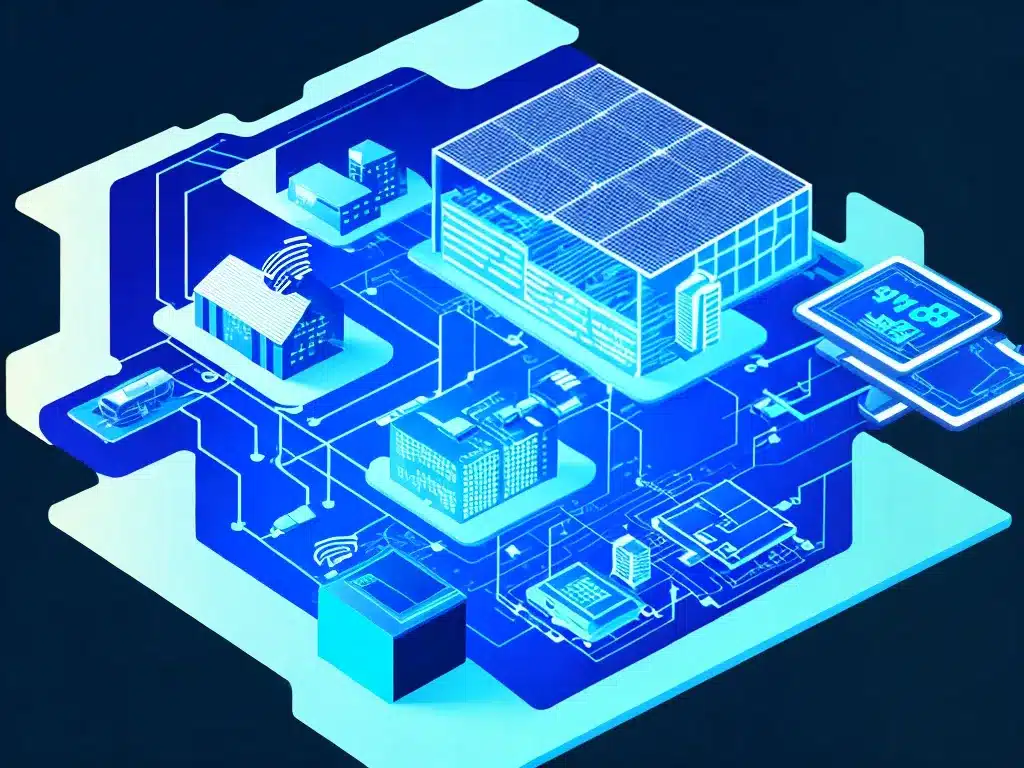
IoT and Smart Grids – A Powerful Combination
The integration of Internet of Things (IoT) technologies with smart grid infrastructure provides significant opportunities to improve energy efficiency, reliability, and sustainability. As an emerging field, the combination of IoT and smart grids enables exciting new capabilities that benefit utilities, consumers, and the environment. In this article, I will provide an in-depth look at how IoT and smart grids work together and the key benefits this integration can provide.
What is the Internet of Things?
The Internet of Things (IoT) refers to the network of physical objects embedded with sensors, software, and connectivity that enables them to connect and exchange data over the internet. These smart devices range from common consumer gadgets like smart thermostats and fitness trackers to industrial machines and city infrastructure.
Key aspects of IoT include:
-
Embedded sensors and connectivity – IoT devices contain sensors that detect and measure data like location, movement, temperature, etc. They also contain connectivity features like WiFi or Bluetooth to connect and transmit the data.
-
Data transmission – The connectivity of IoT devices allows real-time data transmission over wireless networks and the internet. This enables remote monitoring and control.
-
Smart analytics – The data from IoT devices can be analyzed and translated into meaningful insights using artificial intelligence and machine learning. This drives automation and intelligent decision-making.
-
Interconnectivity – IoT allows devices to interconnect and share data seamlessly to form intelligent systems. This underpins smart homes, factories, grids, and cities.
What are Smart Grids?
A smart grid is an upgraded, digitally-enabled power grid that uses information and communications technology to detect and react to local changes in usage. Smart grids differ from traditional power grids in several key ways:
-
Two-way communication – Smart grids allow two-way communication between the utility and endpoints like homes and businesses. This enables real-time data collection and control.
-
Automation – Smart grids use automation, control systems, and artificial intelligence to automatically optimize electric distribution and detect issues. This improves reliability and efficiency.
-
Renewable integration – Smart grids are designed to seamlessly integrate renewable energy sources like solar and wind power into the electricity mix.
-
Demand response – Smart grids support sophisticated demand response systems to dynamically balance electric supply and demand. This helps manage peak loads.
In summary, smart grids utilize connectivity, data, automation and intelligence to make the power grid more resilient, sustainable, and efficient.
Why Combine IoT and Smart Grids?
Integrating IoT technologies with smart grid infrastructure creates a powerful union that unlocks new benefits:
-
Granular visibility and control – IoT sensors enable real-time monitoring and visibility into energy use at the appliance and device level, allowing finer control over the grid.
-
Predictive analytics – The mountains of data from IoT devices fed into smart grid AI systems allow highly accurate load and demand forecasting. This enables better planning.
-
Automated response – IoT enables real-time communication and automated control between utilities and customer devices to instantly optimize usage during demand response events.
-
Renewables management – IoT sensors help manage the variable output of renewable sources by providing real-time monitoring of generation assets like solar panels and wind turbines.
-
Reduced downtime – IoT sensors on grid equipment can identify maintenance issues early. This allows utilities to prevent outages and failures.
-
Enhanced customer experience – Customers benefit from more transparency, automation, and options for controlling and reducing their energy costs.
In summary, combining these technologies amplifies their advantages through synergies. IoT makes smart grids smarter, while smart grids give IoT data more purpose.
Key Use Cases and Examples
Many utility companies and technology firms are already exploring and deploying solutions that integrate IoT and smart grids:
Smart Meters
-
Smart meters contain embedded sensors, communication, and analytics capabilities. They enable automated and real-time meter readings, eliminating the need for manual inspection.
-
Smart meters provide granular visibility into energy usage patterns. Consumers can use this data to adjust habits and save costs. Utilities gain better demand understanding.
Asset Monitoring
-
Sensors retrofitted on grid assets like transformers and transmission lines monitor condition and performance. This allows optimization and predictive maintenance.
-
For example, ComEd is piloting an IoT system to monitor asset health using vibration, temperature and other sensors.
Grid Automation and Control
– IoT-enabled control systems can automate grid operations like outage prevention, voltage regulation, and load balancing. This improves reliability and resilience.
- Duke Energy is implementing an IoT platform to actively monitor grid sensors and enable self-healing networks.
Distributed Energy Resource Management
-
IoT technology helps intelligently manage distributed energy resources (DERs) like rooftop solar, batteries, and electric vehicles.
-
For instance, Sunverge installs IoT controllers to aggregate behind-the-meter DERs into virtual power plants using real-time IoT data and optimization.
Demand Response Management
-
Integrating IoT-connected smart devices with utility demand response programs enables real-time load adjustments aligned with grid conditions.
-
Oracle Utilities pairs its IoT platform with automated demand response capable thermostats, water heaters, and EV chargers. Customers get incentives for allowing utility control.
Looking Ahead
The integration of IoT and smart grid technologies has rapidly accelerated in recent years. But we are still only scratching the surface of the potential capabilities and benefits. As utilities continue grid modernization efforts, IoT will play an integral role in enabling the next-generation smart grid. With greater deployments, we can expect enhanced visibility, automation, and control across the energy grid and within our homes and businesses. This intelligent connectivity will be critical for transitioning to a more distributed, renewable, and efficient energy future.












